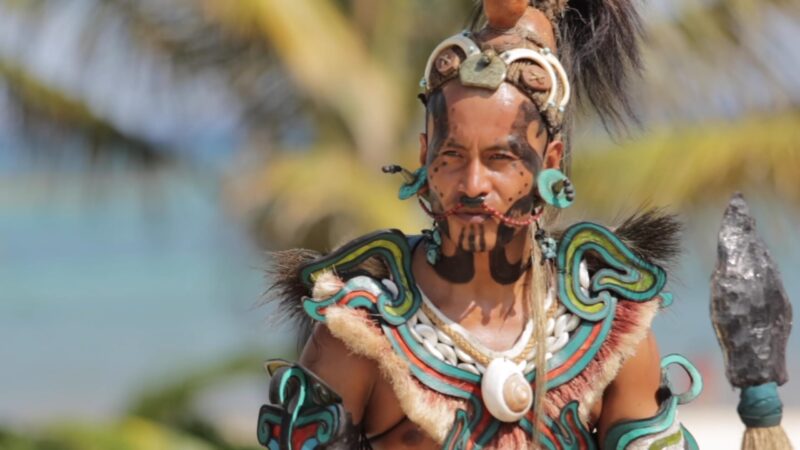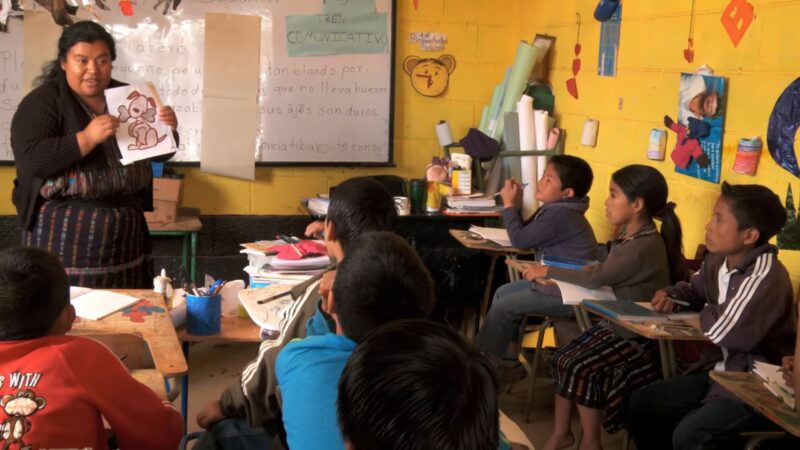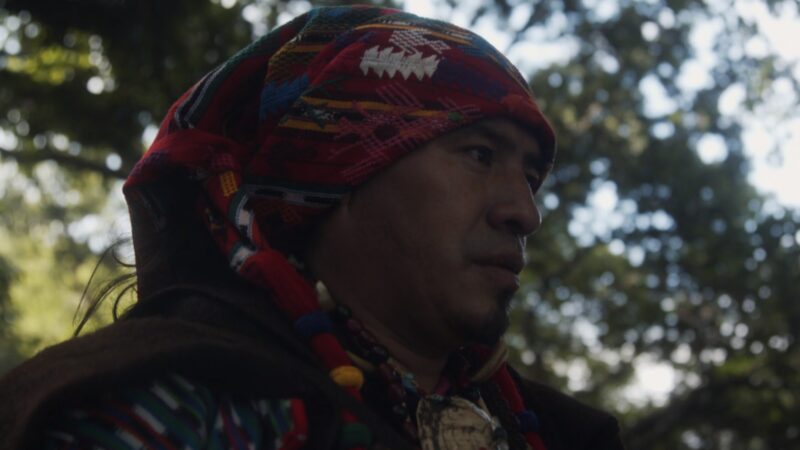Guatemala’s linguistic landscape is as rich and varied as its history, with Mayan languages forming a crucial part of this diversity. Tracing their roots back to the ancient Mayan civilization, these dialects offer a unique window into the past.
Their persistence and evolution are not just a matter of historical interest but also of cultural significance, reflecting the resilience and adaptability of the indigenous peoples of this region.
Now, we want to illuminate the current status of Mayan dialects in Guatemala, revealing their enduring impact and the challenges they face in the modern era.
Current Status of Mayan Dialects in Guatemala
Today, Guatemala is home to a vibrant tapestry of Mayan dialects, each contributing to the nation’s cultural mosaic.
- Number and Distribution: Statistical data reveals a surprising number of Mayan dialects still actively spoken, each with its regional stronghold.
- Cultural Significance: These are not mere relics of the past but active components of Guatemala’s cultural identity, influencing everything from daily communication to ceremonial practices.
Now let us see all the Mayan dialects in the country
| No. | Mayan Language | Region(s) Predominantly Spoken |
|---|---|---|
| 1 | K’iche’ | Central Highlands |
| 2 | Q’eqchi’ | Verapaz, Izabal |
| 3 | Kaqchikel | Central Highlands, especially around Chimaltenango |
| 4 | Mam | Western Highlands |
| 5 | Poqomchi’ | Central and Eastern Verapaz |
| 6 | Q’anjob’al | Huehuetenango |
| 7 | Ixil | Nebaj, Chajul, and Cotzal in El Quiché |
| 8 | Tz’utujil | Around Lake Atitlán |
| 9 | Achí | Baja Verapaz |
| 10 | Akatek | Huehuetenango |
| 11 | Awakatek | Huehuetenango |
| 12 | Ch’orti’ | Chiquimula |
| 13 | Chuj | Huehuetenango and parts of Mexico |
| 14 | Itza’ | Petén |
| 15 | Jakaltek (Popti’) | Huehuetenango |
| 16 | Mopan | Petén and Belize |
| 17 | Poqomam | Jalapa, Guatemala City, Chinautla, Palín |
| 18 | Q’eqal | Alta Verapaz |
| 19 | Sakapultek | Sacapulas, El Quiché |
| 20 | Sipakapense | Sipacapa, San Marcos |
| 21 | Tektitek | Tacaná, San Marcos |
| 22 | Uspantek | Uspantán, El Quiché |
Challenges in Maintaining Linguistic Diversity
Preserving the rich linguistic heritage of Mayan dialects is fraught with challenges in today’s globalized world.
- Cultural Assimilation: The pressure to assimilate into dominant cultural norms often marginalizes indigenous languages.
- Economic Factors: Economic imperatives and opportunities often incentivize the adoption of more widely spoken languages at the expense of indigenous dialects.
- Technological Influence: The proliferation of technology and digital media predominantly in global languages poses a threat to the vitality of Mayan dialects.
Historical Roots of Mayan Languages

The Mayan languages, a group with an ancient lineage, echo the voices of a civilization that once dominated Mesoamerica.
- Ancient Beginnings: These languages originated from the pre-Columbian Maya civilization, renowned for their monumental architecture, sophisticated calendar systems, and hieroglyphic writing.
- Linguistic Evolution: Over centuries, these languages have evolved, splitting into various dialects, each carrying its unique features and linguistic nuances.
- Cultural Survival: Despite facing the upheavals of colonization and modernization, Mayan languages have survived, continually adapting while maintaining a link to the past.
Their Role in Guatemalan Culture
Mayan dialects are more than just means of communication; they are vessels of cultural identity and heritage. These dialects serve as a cornerstone of cultural identity for many indigenous communities, embodying traditions, histories, and worldviews.
From weaving intricate tales in literature to encoding rituals in music, these enrich every aspect of Guatemala’s cultural life. The interplay between these dialects and the broader national identity is complex, reflecting a nation grappling with its diverse heritage and modern identity.
Influences and Interactions with Other Languages
The relationship between Mayan dialects and other languages in Guatemala is marked by both influence and adaptation.
- Linguistic Borrowing: There is a constant exchange of words and expressions, enriching both Mayan dialects and other languages like Spanish.
- Bilingualism: The prevalence of bilingualism showcases a pragmatic adaptation to the linguistic realities of the country, aiding in cultural and economic integration while maintaining linguistic heritage.
- Societal Dynamics: These interactions reflect broader societal dynamics, demonstrating how languages can both bridge and highlight cultural divides.
Importance of Linguistic Diversity in Guatemala
Guatemala’s linguistic diversity is not just a characteristic of its cultural landscape, but a vital component of its social and national identity. The presence of Mayan dialects alongside other languages enriches the nation’s cultural fabric, offering a multi-layered perspective of its history and people.
Each adds a unique flavor to the national identity, showcasing the country’s rich heritage. The diversity of languages spoken reflects the complex social dynamics and histories of Guatemala’s various communities. Embracing this linguistic diversity is key to fostering unity and mutual respect among the diverse populations of the nation.
Educational Initiatives Promoting Mayan Languages

Education plays a pivotal role in the preservation and promotion of Mayan languages. Guatemala has seen various initiatives aimed at integrating these into the educational system, ensuring their transmission to future generations.
Efforts have been made to include Mayan languages in the curriculum, recognizing their importance in children’s cultural identity and heritage. The involvement of local communities in these educational initiatives ensures that the teaching is culturally relevant and linguistically accurate.
While these efforts have made significant strides, they face challenges such as resource limitations and the need for trained educators fluent in these dialects.
Their Influence on Modern Guatemalan
Society
The influence of Mayan dialects extends beyond cultural expressions; they shape the very fabric of modern society in Guatemala.
- Social Interactions: These dialects influence social interactions, often dictating community dynamics and social hierarchies.
- Cultural Renaissance: There is a growing awareness and appreciation of these dialects, leading to a cultural renaissance where younger generations are rediscovering and embracing their linguistic heritage.
- Modern Adaptations: The adaptation of these dialects in modern media and technology demonstrates their evolving nature and relevance in contemporary society.
Future Prospects of Mayan Dialects in Guatemala
The future of Mayan dialects in Guatemala hinges on a delicate balance between preservation and adaptation. As the country navigates the challenges of globalization and technological advancement, these languages face both opportunities and threats.
Continued efforts in education, media, and cultural initiatives are crucial for the preservation of these dialects.
Embracing technology and modern communication platforms can help in revitalizing these languages, making them relevant to younger generations. The role of international support and collaboration cannot be understated, as it brings global attention and resources to the efforts to preserve these vital aspects of Guatemala’s cultural heritage.
FAQs
What is the rare Mayan language?
The rare Mayan language often refers to one of the lesser-spoken languages within the Mayan language family. While languages like K’iche’ and Yucatec Maya are more widely spoken, others like Itza’ and Lacandon are considered rare due to their smaller number of speakers.
Did Mayans speak Nahuatl?
No, the Mayans did not speak Nahuatl. Nahuatl was the language of the Aztecs, another prominent Mesoamerican civilization. The Mayan languages form a distinct language family separate from Nahuatl. While the Maya and the Aztecs coexisted in Mesoamerica for a period, they had different cultural and linguistic backgrounds.
What countries still speak Mayan?
Mayan languages are still spoken in several countries across Central America. These include Mexico (primarily in the Yucatán Peninsula and Chiapas), Guatemala, Belize, and parts of Honduras and El Salvador.
How many Mayans are left?
It’s challenging to give an exact number of Mayans left today, as the term “Mayan” refers to a group of indigenous peoples that do not represent a single homogeneous entity. It’s estimated that there are approximately 6 million Maya people currently living in Mesoamerica, primarily in Guatemala and the Yucatán Peninsula in Mexico.
Summary
The Mayan dialects of Guatemala are not mere remnants of a bygone era but living languages that continue to evolve and adapt. Their survival and flourishing in the modern world are crucial for maintaining Guatemala’s rich cultural diversity and heritage.
The efforts towards their preservation and revitalization are a testament to the resilience and adaptability of the Mayan people and their languages. As Guatemala moves forward, these dialects will undoubtedly play a significant role in shaping its cultural and societal landscape, bridging the past with the present and future.

